"That'll Buff Right Out…" Or How I Learned to How to Use Wheel Chocks When Hand-Propping Venice, Florida - December 11, 2005 The Sunshine State... Florida is a favorite state of pilots everywhere. Plentiful airports, few obstacles, favorable weather year-around, and an almost euphoric attitude towards flight--characterized by such figures like Kermit Weeks and his famed collection of aircraft--reflect the state's appeal to aviators and non alike. But, in an internet posting that began in 2008, photos of an incident that occurred in Venice, Florida, started to circulate through e-mails and message boards around the world. They document the aftermath of hand-propping that went horribly wrong. This is the story behind those photos: On Sunday, December 11th, 2005, a low-time pilot--having logged 195 hours--was fueling his white and blue Piper Cherokee, registered as N98130, after his flight at the Shell self-service fuel island, located at the northeast corner of the Venice Municipal Airport (VNC). He was familiar with the plane, having 40 hours in it, and having flown around 25 hours within the past three months. That day's flight had been uneventful, except that--on his return to the non-towered field--he noted the plane's battery was dead. After he finished filling his tanks with 100LL avgas, he pushed the plane back from the station and climbed in the cockpit. There, he prepared to hand-prop the engine by using the primer to shoot some fuel into the engine cylinders, opened the throttle halfway, and turned on both magnetos. He then got out of the cockpit, and got in front of the plane to start the engine. The Science of Starting an Engine... Hand-propping to start an aircraft's engine is as old as aviation itself. The mechanical energy from moving a propeller by hand is converted into electricity by the magnetos which, when directed to spark plugs, ignites the series of processes that make the internal combustion engine possible and reliable. However, a person being in close proximity to a large, spinning, piece of metal or wood has resulted in more than its share of injuries and deaths in the century that has followed the Wrights at Kitty Hawk. Safety advancements have given us the starter motor that--through the use of batteries, solenoids, and gears--allowed pilots to start their powerplants with reduced risks to others and themselves. So, if you don't have electricity: the solenoid won't deploy, the gears that turn the crankshaft won't engage, and--no surprise--the engine won't start. But, a well-versed pilot can still start the engine, the "old-fashioned" way. "It Could've Been Worse..." The pilot gave the prop a strong, swift swing and--instantly--and the Lycoming O-320 fired and surged to an estimated 1800 rpm. Suddenly, the Cherokee lurched forward, directly for the fuel pumps! Luckily, surrounding nearly all filling stations are sturdy, concrete-filled, steel post that stand about four feet high. Intended to prevent ground vehicles from running into the tanks--rupturing the volatile contents, and causing a spill (or worse)--on this day, it would be called upon to defend the tanks against an unexpected, yet familiar, foe. As the pilot stood, shocked and helpless, the plane accelerated and its nacelle careened into the southeast-most column. The sudden impact of the propeller against the post sheared the prop hub from the crankshaft and sent it--propeller, spinner, and all--into the air eastward, landing on the roof of a nearby hangar some 200 feet away (although popularly reported as 150 yards from the pumps).
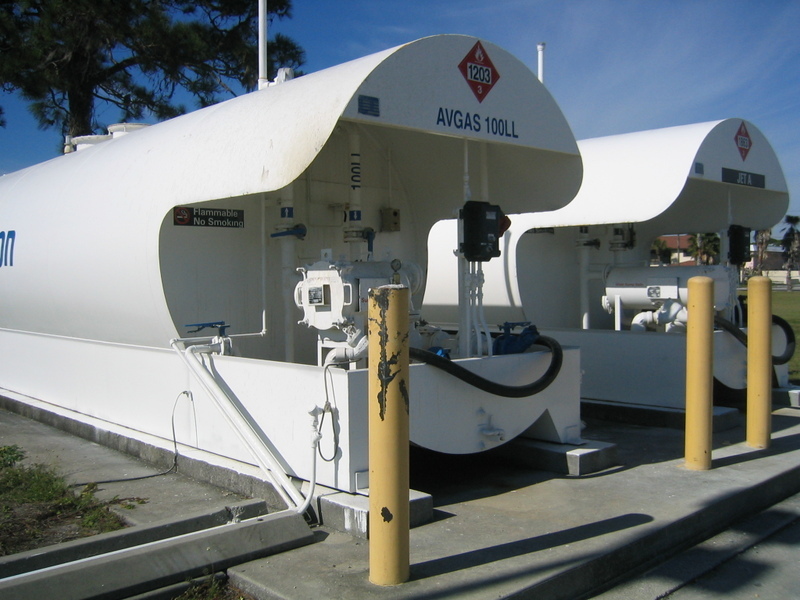 | 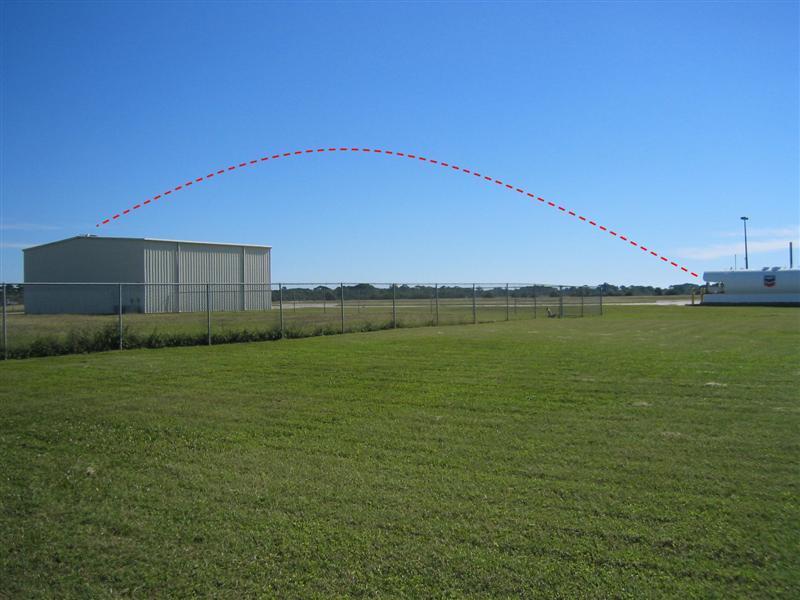 | | The fueling station, and the impacted steel post | The estimated flight path of the propeller hub | 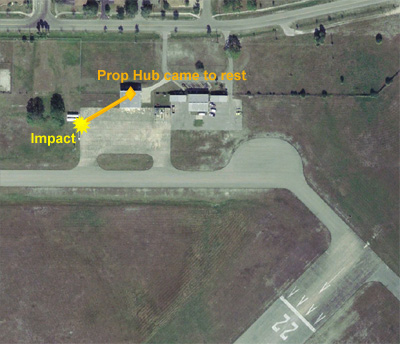 | 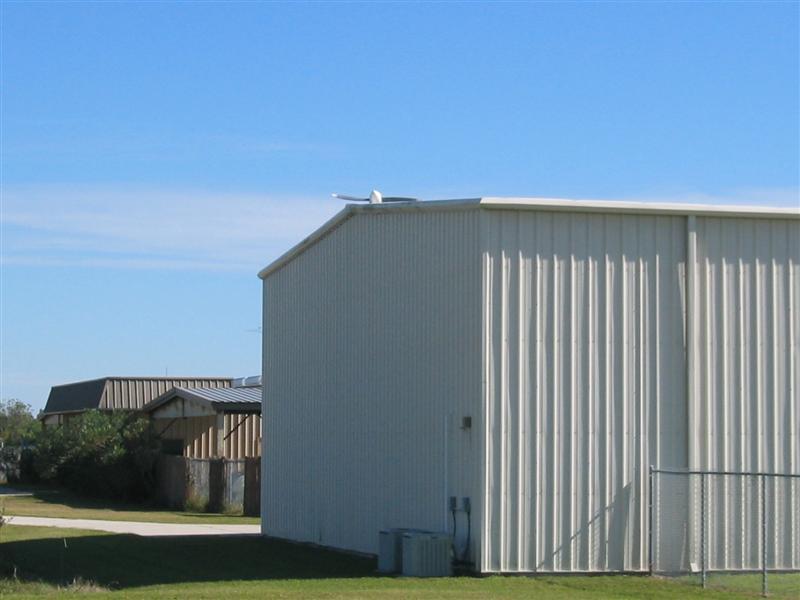 | | Location of the impact, and prop's trajectory | The prop hub, resting atop the hangar's roof | 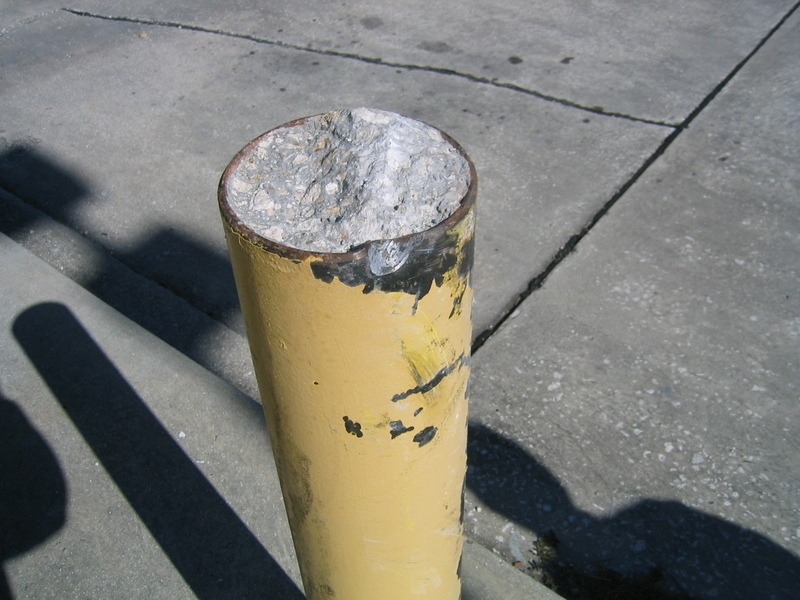 | 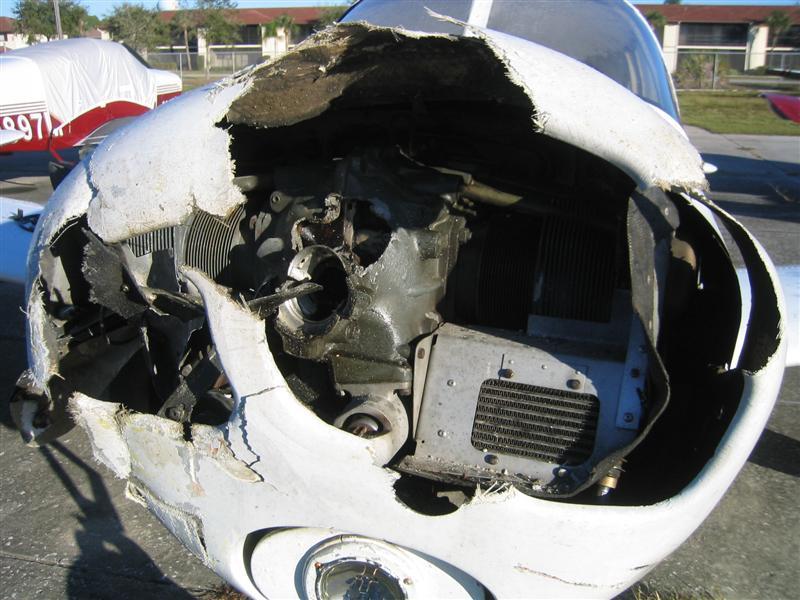 | | Close-up of damage to the fuel station's steel post | Close-up of engine damage (front view) | 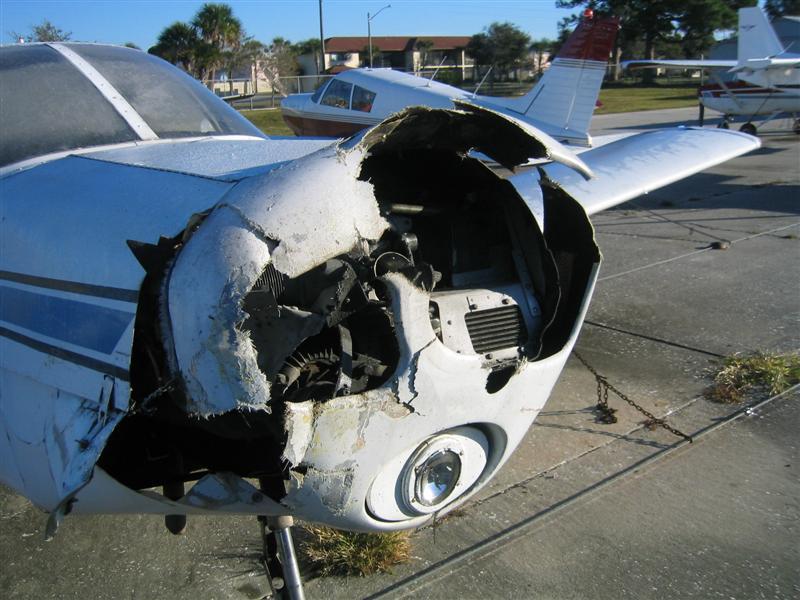 | 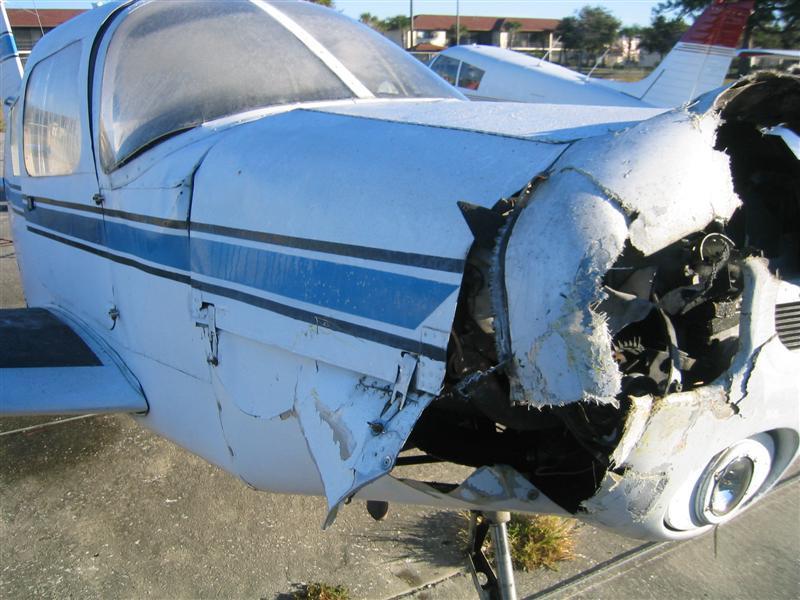 | | Close-up of engine damage (quarter-front view) | Close-up of engine damage (note the windshield frame deformation) |
As the pilot was not planning to fly any more, the FAA classified the event as an incident, and no formal investigation by the NTSB was conducted. No one was injured from the occurrence, except for the owner's pocketbook. The legend of this story follows that the pilot was not carrying insurance on the plane and, with the damage/destruction of the engine and over 8,500 hours on the airframe, the plane was effectively totaled. He sold the plane's carcass for $400, and it was parted out via online auctions. Lessons Learned... Regardless, the reality is that the incident was completely preventable, by either applying the Piper's hand-operated parking brake, or with the better option of placing tire chocks around one or more of the wheels to prevent the plane from rolling after engine starts. Better yet, if another pilot is available, having them at the aircraft's controls can be a better solution to the hand-proper's dilemma. Another set of knowledgeable eyes and hands can quickly assist in the event the situation evolves by adjusting the engine's settings, applying additional braking, or just helping keep a watch for inadvertent bystanders. It was a costly lesson for one pilot and, if not for a well-placed steel post doing its job, could have been far worse. Flying is suppose to be an serious, yet enjoyable, experience, best achieved when done safely. Don't mar the enjoyment by rushing or being inattentive to simple tasks. Think ahead of the aircraft--even when it is on the ground. The life, or plane, you save may be your own. |
